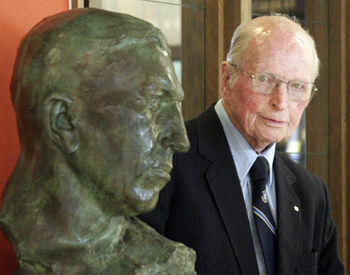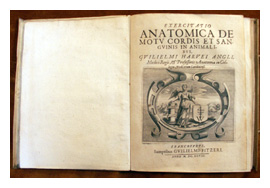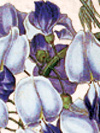| History of the Memorial Room Collection Page 5 |
|
||||||||||||||||||
 |
Expanded remarks by Professor Emeritus, Wm. C. Gibson, D.Phil.(Oxon) M.D., F.R.C.P., September 7, 1988 at the dedication of the Historical Collection of the Woodward Library, University of British Columbia. The Life Sciences Libraries thanks Dr. William Gibson for his kind permission to reproduce his historical comments on the Historical Collection of the Woodward Library. |
|||||||||||||||||
|
On a bright summer's day Noel Poynter telephoned from London to say he had seen in a shop in the Rue de la Paix in Paris a large tapestry which could nicely fill the high oak-panelled wall in the Memorial Room. A colored photograph followed, and while there was some mystery about the provenance of this modern piece, Dr. McKechnie said we should go ahead, with funds from the ever helpful Woodward Foundation. When Puggy heard of this he said "Phone them to send it by airmail. I don't trust the dealers in Paris. Get it here tomorrow". The beautiful post-war tapestry, entitled "Masters of Science" arrived in a large wooden box in a twinkling, and we all took a hand in unfolding it and displaying it to an astonished crowd. The work had been done by the young Gobelin tapissier Roland to the design of Guillonet. They had been commissioned by the outstanding patron of "new art" M. Antoine Behna. He lived on a large "farm", more like a hunting preserve, in the province of Cher, south of Orleans. (Whenever I visited him he made it clear to me that his farm was many times larger than that of President L.B. Johnson in Texas.). The mystery of this tapestry persisted until I visited M and Mme Behna at their home in France. They lived in the house which the architect of the Vichy gardens had originally built for himself. The Seigneur recollected that he had a copy of "Masters of Science" made for his niece in Paris, and this clearly had been sold to us, to his surprise, if not chagrin. The only tapestries which he had allowed out of France were gifts to the Pope and President Truman. Nonetheless he showed me several others stored in his extensive barns. One of those caught my eye. It was entitled "Masters of the Spirit"--parallel to the one we had, but in this case the characters portrayed were great philosophers and writers of the past. He would not part with it however, for one of his oldest tapissiers, while working on this massive 16 x 11 feet beauty suffered a cerebral haemorrhage, at 68 years of age when he was only half finished the project. The disastrous stroke affected the man's perception so that the right half is a shambles compared with the left half which preceded it. M Behna would not allow it to be sold lest people viewing it would make fun of his unfortunate weaver. I explained that I was a neurologist with scientific interest in this amazing result, and that my colleagues in far-off Vancouver had the same interest. Finally he agreed that in those circumstances we could buy it. I must say we paid rather handsomely for our "interest". The tapestry arrived eventually on a great roller, and was hung above the "Masters of Science". Many physicians and psychologists have come to see it since. A third, very modern tapestry graces the west wall of the Sherrington Room. On coming home from World Health Organization meetings in Geneva I was asked the standard question by H.R. MacMillan: "What was the best thing you saw over there?" I replied that it was a tapestry showing Dr.Norman Bethune, the Canadian surgeon operating in China when he served with the famous Eighth Route Army, which, crossing the Yangtse gorges ahead of Chang Kai-Shek's troops, joined the guerillas in the northwest and finally expelled Japan from the mainland of China. H.R. said quietly "Get it and send me the bill". After months of enquiring overseas I gave up the hunt and reported this to H.R. He replied: "Get one made in China at my expense". I therefore sent off a hand-colored photograph of Bethune doing a chest operation in a little Buddhist temple, after H.R. approved the picture. I asked as I was leaving his comfortable study why he, the head of the Establishment, wanted Bethune thus memorialized. He replied quite testily: "I'll tell you why. He was a Canadian with guts, and there aren't many of us left." Six months later a great wooden box arrived from Shanghai filled with mothballs and the beautifull woollen tapestry, already mounted and surrounded by a broad white frame. Years later, Dr. Wong, the anaesthetist at the operation in the tapestry, came to see it in the Sherrington Room and wept as he beheld the familiar and historic surroundings. As time went on and fortune favoured us we acquired, while I was visiting Sir Robert MacIntosh in Oxford, his small but select collection on early anaesthesia. He was a gifted New Zealander who became the first Nuffield Professor in his field when William Morris, the automobile manufacturer, set up his four chairs at Oxford, producing in subsequent years one of the world's finest medical schools and clinical research groups. Over tea, Sir Robert and his wife listened to my description of the Sherrington Room and its contents, together with our holdings in rare books. They decided that a recent windfall should come to Vancouver. That windfall was none other than a collection of the works and notes of the pioneer British anaesthetist Joseph Thomas Clover (1825-1882), whose last living relative was a solicitor in Oxford who was insistent that Sir Robert should have everything. When the collection arrived at the Woodward Library it was catalogued here as a labor of love by the visiting British medical historian and anaesthetist Dr. K. Bryn Thomas. The greatest satisfaction of all was the "liberation" from
a physician's study in Beverly Hills, California of the portrait of William
Harvey, painted in his lifetime. My search for one of the known fifty copies of the 1628 bombshell took me to Oxford where the Bodleian Library has three copies. They would not even consider the sale of their worst copy. Lord Herbert's library of Jesus College had one, and the Head of the college, John Habakkuk, was willing to consider a rental of it to us for a period of three years. By terms of the Herbert bequest a sale was impossible. |
||||||||||||||||
|
||||||||||||||||

 However,
that was preceded by a related venture, the acquisition of a first edition
of Harvey's contribution in 1628, De Motu Cordis, consisting of
72 pages in which he proved that the blood moved in a circle. This slim
volume was printed by an English publisher resident in Frankfurt, the
centre of the European book trade. No one knows how many were printed
on rather poor paper which, in most copies, has become a tan shade, alas.
However,
that was preceded by a related venture, the acquisition of a first edition
of Harvey's contribution in 1628, De Motu Cordis, consisting of
72 pages in which he proved that the blood moved in a circle. This slim
volume was printed by an English publisher resident in Frankfurt, the
centre of the European book trade. No one knows how many were printed
on rather poor paper which, in most copies, has become a tan shade, alas.

